I have wanted to make a post dedicated to the Poles and their country for a long time, because they seem to be brought up more often than one would imagine. The Tradcaths love Poland, I remember how everyone thought it was the basedest sexiest country in all of Evropa before the Hungarians became well-known. This crowd perhaps strokes their main unit while listening to Sabaton talk about the legendary Winged Hussars and their attack on the Turks at Vienna. Poland is also a topic of NAFO fixation, due to their unmatched glazing of Amerikwan military in Europe. Poland is also important with respect to World War II. It is quite easy to justify why the Nazis invaded the USSR, but many people view the invasion of Poland as unjustifiable. However, I cannot discuss the Poles without discussing the Slavs as a whole, and I think ultimately many people want me to discuss the Slavs as a whole more even than they want to hear about Poland in particular. In this post, I will discuss it all.
Although people assume that ancient Slavs would be most like modern Russians, this is likely untrue. It is likely that Slavs originate as a southern offshoot of the Balts, or that the Balts originate as a northern offshoot of the Slavs, and the splitting of the Balts and the Slavs did not occur until the classical period from language studies. This is late for Indo-European languages. For comparison, it is likely that Gaelic split off from other Celtic languages not long after the Balto-Slavic languages diverged.
The early Slavs were not in Russia, whose southern half was dominated by Iranic tribes like the Sarmatians and Scythians, and whose northern half was dominated by Finnic peoples. Still today, cisuralic Russia is peppered with various Uralic groups such as the Karelians, Ingrians, Vepsians, Mordvins, and Mari. Russians without a doubt have a certain Uralic pull, although this doesn’t mean they are significantly East Asian. Only in the area around Arkhangelsk do Russians (apparently) have significant East Asian ancestry.
P.S. all of the samples I use, unless specified otherwise, come from Davidski’s official G25 Datasheets. But I averaged out his Russian samples into larger regions because there were just so much.
Russia_Arkhangelsk:RussianLeshukonsky,0.1197416,0.043668,0.0909616,0.0796518,0.0096016,0.0161198,0.0137718,0.013753,-0.0021272,-0.035281,0.0133808,-0.0096814,0.0198906,0.00311,-0.0093374,-0.002148,-0.0002346,-0.0050168,-0.0058074,0.0004754,0.0026202,-0.0010884,-0.0002218,0.002193,0.0010298
Russia_Arkhangelsk:RussianPinezhsky,0.1240672,0.0625564,0.0922436,0.0802332,0.0189572,0.0216418,0.0082252,0.0146762,9e-04,-0.0323286,0.0090614,-0.016785,0.0205152,0.00567,-0.011645,-0.0029966,0.0019298,-0.0025084,0.0007794,0.005903,0.0083604,0.0008656,-0.0001972,0.0022172,0.0052926
Russia_Arkhangelsk:RussianPinega,0.1248257,0.0636397,0.0945317,0.07752,0.02185,0.023241,0.0118287,0.0146147,0.0013637,-0.0311623,0.007091,-0.0119397,0.0239343,0.011331,-0.0102243,-0.0037567,-0.0039987,-0.0022803,-0.0051957,-0.001042,0.0076117,-0.0001233,0.0019717,-0.0024097,0.0020753
Russia_Arkhangelsk:RussianKrasnoborsky,0.1278613,0.0766725,0.082715,0.0710062,0.0243633,0.0218465,0.0090872,0.0159993,0.0030337,-0.0290667,0.006333,-0.0108155,0.0194498,0.0119503,-0.0074643,-0.0025857,-0.000261,-0.0014357,-0.0008798,0.003731,0.002163,-0.001896,0.0023828,-0.0007228,-0.0005588
Russia_Muscovy:RussianKostroma,0.1282407,0.0873355,0.0814582,0.0680453,0.027441,0.0215208,0.0119073,0.0129993,-0.0033747,-0.0299475,0.0042222,-0.0074932,0.017963,0.0123402,-0.0091383,-0.0039112,0.0009127,-0.0016258,-0.0017597,0.0004792,6.23e-05,-0.0014427,0.0035947,-0.0006025,-0.0020557
Russia_Muscovy:RussianYaroslavl,0.1308963,0.1056153,0.0817097,0.0732133,0.0315953,0.0195223,0.0108887,0.0069997,-0.001159,-0.027457,-0.0004327,-0.0091417,0.016303,0.021882,-0.014115,-0.0017233,0.0043463,-0.0002113,0.0005447,0.0042103,-0.0065713,-0.0039567,-0.000986,-0.0014057,0.0025547
Russia_Muscovy:RussianRyazan,0.1277666,0.1100158,0.0704272,0.0640886,0.0300312,0.0225669,0.0105558,0.0115188,-0.0036304,-0.02322,0.0002164,-0.0085049,0.0161296,0.0211138,-0.0127125,-0.0020661,0.0063562,-0.0022276,0.0009218,-0.0003544,-0.0054591,-0.0031635,0.0050017,-0.0023998,-6.98e-05
Russia_Muscovy:RussianTver,0.1296159,0.105869,0.0766026,0.0672244,0.0324289,0.0251699,0.009312,0.0125765,-0.0042438,-0.0264926,0.0009541,-0.0096478,0.0168171,0.0219511,-0.010162,0.0018729,0.0061605,-0.000206,-0.0001885,0.0021885,-0.0032286,-0.0048379,0.0087042,-0.0032685,-0.002305
Russia_West:RussianSmolensk,0.1321866,0.1242332,0.0715021,0.0654613,0.0393098,0.0252119,0.0112963,0.0128609,-0.0008043,-0.0248328,-0.0043845,-0.0082727,0.0169473,0.0282951,-0.0114004,-0.0060019,-0.0011734,-0.0019847,0.0029749,0.001951,-0.0025871,-0.0048471,0.0049217,-0.0059365,0.0017243
Russia_West:RussianKursk,0.1308964,0.1157701,0.0710872,0.0648019,0.0341601,0.023113,0.0103991,0.0121438,-0.0032469,-0.0255587,-0.0018066,-0.0080179,0.0183225,0.0206778,-0.0127748,0.0012101,0.0016136,-0.0008869,0.0023096,0.0012817,-0.002558,-0.0040188,0.0051146,-0.0058141,-0.0017214
Russia_West:RussianBelgorod,0.1354493,0.1221175,0.0695788,0.0566865,0.036853,0.019801,0.0119855,0.014134,-0.0043972,-0.0216862,-0.0020298,-0.0103035,0.0196975,0.0212972,-0.0130293,-0.0028838,0.005574,0.001077,0.0036138,0.0024075,-0.0037748,-0.0059045,0.005423,-0.006989,0.0009878
Russia_West:RussianOrel,0.1305861,0.1167859,0.0711387,0.0608121,0.0334886,0.0224127,0.0091653,0.0130274,-0.0047971,-0.0251321,-0.0017864,-0.0078475,0.0156365,0.0247095,-0.0115855,-0.0034354,-0.0003911,-0.0011862,0.0027882,0.0011938,-0.0037547,-0.0044065,0.0074172,-0.0055976,-0.0009906And this is the model I generally use when I am too lazy to make a specialized model:
Yamnaya_RUS_Samara,0.1255849,0.089028,0.0426986,0.1153479,-0.0287232,0.0450564,0.0036033,-0.0025642,-0.0559032,-0.0728943,0.0018222,3.34e-05,-0.0026924,-0.0233041,0.0366141,0.0157633,-0.0012316,-0.0017879,-0.0038408,0.0137704,-0.0031749,0.0007557,0.0110649,0.0186102,-0.004537
WHG,0.1246365,0.116278,0.184789,0.189279,0.1546445,0.0464355,0.0131605,0.0372675,0.0891725,0.017768,-0.0152645,-0.015736,0.015832,-0.0030275,0.053406,0.058273,0.00502,0.016343,-0.0093015,0.055589,0.0944585,0.0111905,-0.049607,-0.160806,0.0170645
TUR_Marmara_Barcin_N,0.1181049,0.1812478,0.0024244,-0.100484,0.0518483,-0.0468005,-0.0050917,-0.0071866,0.0366683,0.081182,0.0085293,0.0118038,-0.0232901,0.0009437,-0.0412654,-0.009155,0.0223267,0.0006696,0.0116241,-0.0095938,-0.0132444,0.0059706,-0.0044663,-0.0033969,-0.0055028
Levant_Natufian_EpiP,0.0267485,0.143697,-0.030924,-0.138245,0.034468,-0.0805995,-0.0179785,-0.0201915,0.112693,0.0056495,0.0286615,-0.02248,0.0766345,-0.001239,0.0138435,0.006033,-0.0107565,-0.0005705,-0.0194205,0.0322655,0.003556,-0.000804,-0.0025885,-0.0037355,0.004371
MAR_Taforalt,-0.189857,0.0814452,-0.0242866,-0.085595,0.027636,-0.0552202,-0.0705968,0.0184146,0.155397,0.003499,0.0209156,-0.0318316,0.0747168,-0.0513334,0.0711988,-0.0363032,0.0052676,-0.066106,-0.1424162,0.0389938,-0.0376836,-0.1255322,0.0730118,-0.0137606,0.0164534
IRN_Ganj_Dareh_N,0.0430252,0.0664158,-0.1550722,0.0047158,-0.122669,0.0235384,0.017109,-0.0011998,-0.082546,-0.0544158,-0.0028258,-0.0016186,0.0044896,-0.0062756,0.0316498,0.0561384,-0.0054242,0.0068664,0.0136508,-0.0334162,0.00856,-0.028836,-0.0110678,-0.039331,0.0222254
GEO_CHG,0.091058,0.102568,-0.083344,-0.00323,-0.08617,0.020638,0.024911,-0.001846,-0.128236,-0.074717,-0.006333,0.023979,-0.054856,0.004404,0.026601,-0.03275,0.02386,-0.013429,-0.022249,0.034767,0.033815,-0.007048,0.006532,-0.025787,-0.002036
Yoruba,-0.6300625,0.0625011,0.022113,0.0167079,0.0005035,0.0124741,-0.044417,0.0477673,-0.0488813,0.0327694,0.0046205,0.0007904,0.0230561,0.0009509,0.0125232,-0.0096067,0.0070763,0.0004491,0.006022,-0.00299,0.0015542,0.0023156,-0.0017592,-0.0004711,-0.0004246
Dinka,-0.577083,0.0507765,-0.0003773,-0.0075098,-0.0053855,-0.0016735,-0.0176848,0.0204222,0.081145,-0.0969495,-0.02107,0.022742,-0.0383172,-0.0011698,0.0101452,-0.021347,0.0186125,-0.0094382,0.0241968,-0.0241678,0.002402,0.003308,0.001479,0.0009038,0.0096995
RUS_Shamanka_N,0.0309599,-0.4147422,0.0950344,-0.0157947,-0.0868469,-0.0482203,0.0053815,0.010061,0.0147054,0.0125196,-0.0160603,-0.0018137,0.0035828,-0.0078032,-0.0046552,-0.0032088,-0.0025164,0.0005827,0.0064608,0.0178333,-0.0170449,-0.0059478,-0.0165151,-0.0032051,0.0046943
Han,0.0254964,-0.4441926,0.0088248,-0.0643416,0.0505322,0.020415,0.0067212,0.0033692,-0.0136212,0.0037906,-0.076355,-0.01142,0.0121306,-0.0083674,-0.0050218,0,0.0025556,-0.0011656,-0.0014832,-0.004377,0.0109056,0.0073698,0.0085288,-0.001687,-0.001868
Onge,-0.0225251,-0.2445288,-0.1324289,0.095965,0.0299327,-0.0047557,-0.0076438,0.0075786,0.0548233,0.0244388,0.023495,0.0032182,-0.0040608,0.0084746,-0.0126933,-0.0111446,0.010918,-0.0016203,-0.0059807,0.0288295,-0.0037107,0.0096905,-0.0128242,-0.0011225,0.0043426
CHN_Tarim_EMBA1,0.1024407,-0.1020145,0.0724415,0.2024339,-0.1150705,0.0468284,-0.0488607,-0.0607316,-0.0422248,-0.0966016,0.0281819,-0.0135289,0.0246371,-0.0711008,0.0259348,0.0231912,-0.0195695,-0.0016125,0.0011998,-0.0060484,-0.0502636,0.0072393,0.0237195,0.0138464,-0.0086437
FYI: Shamanka_N = basically pure Siberian Hunter Gatherer, Tarim_EMBA1 = West Siberian Hunter Gatherer (Botai/Tyumen like). Everything else, I hope, is rather self explanatory.I pray, for your sake, that the Substack reader doesn’t voice out code blocks.
The Sarmatians, on the other hand, were largely wiped out by the Turkic and Hunnic invasions, which is important for later. Their only modern linguistic descendants are the Ossetians in the Caucasus, although the Jasz people of medieval Hungary were likely of Sarmatian Alanic origin. There is no evidence of Scythian ancestry in modern Slavs. The original homeland of the Slavs is still somewhat clouded in mystery, but it is generally agreed to have been somewhere between the Vistula and the Dnieper. Some candidates for this were once in modern-day Poland. Both the Wielbark and Przeworsk cultures were candidates for early Slavic language areas. However, genetic studies have demonstrated otherwise. The Wielbark Culture was likely East Germanic, and was genetically scandinavian-like. It seems that there were a handful of Slavic individuals among them, but they represented the exception and not the norm.
This lines up with Roman geography. Northern Poland (save what would become Prussia) was inhabited by Germanic tribes, while Southern Poland was inhabited by the Celtic descendants of the La Tene Culture.
The tribe of the Veneti or Venedi, which lived to the east of the Vistula is probably an early Slavic population. This is true for three reasons: 1) The term “Venedi” is likely related to the later term “Wends” which refers to Slavic raiders in Northern Poland and Germany. 2) The Byzantines describe the Venedi as the ancestors of the slavs. 3) Tacitus does not know if the Venedi are Germans or Sarmatians. Pliny the Elder assumes they are Sarmatian and says they come from the Baltic region, which would make sense if Slavs were an offshoot of Balts.
The Venedi are associated somewhat with the Zarubinets Culture centered in Polesia, a rather swampy region which the Corded Ware Culture likely developed in a couple thousand years prior.
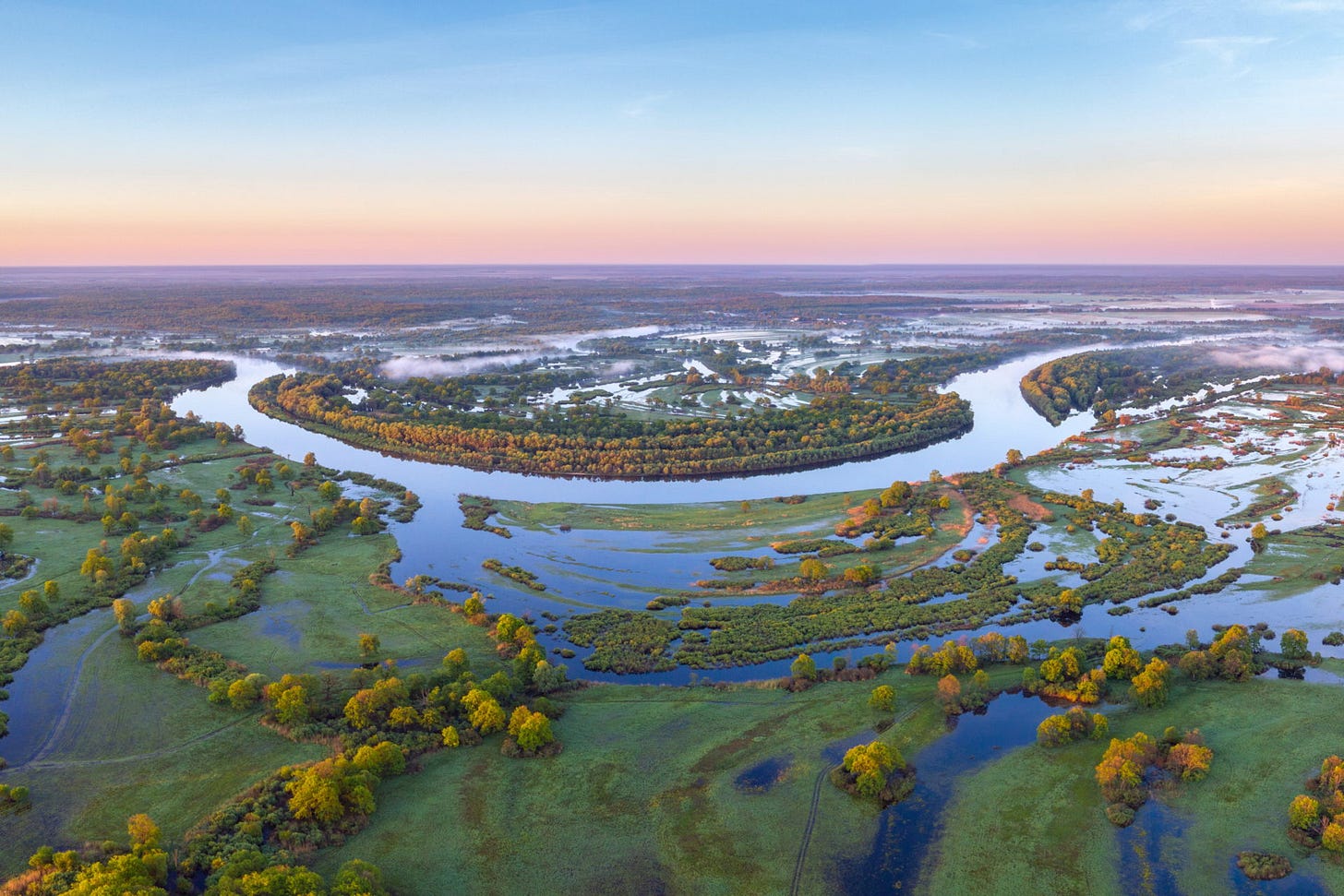
Anyways, the Slavs expand into Eastern Europe dramatically, taking an advantage of a region which was devastated by centuries of nomadic invaders. The Alans and the Goths came first, but were pushed west by the Huns, Avars, and Turks. The Byzantines were preoccupied with the Arabs in Africa and the Levant. Over the course of a century, the Slavs would go from nobodies to dominating most of Eastern Europe and pushing deep into the two strongest empires in Europe (the Franks and Byzantines). These Slavs were presumably not Russian-like, because Early Slavs from Czechia are more like modern West Slavs and especially Carpathians. There is also a very Slavic-like sample from Iron Age Hungary. If Slavs were in Polesia, it is not unlikely that they were influenced by Celtic DNA, and although I prefer the Baltic hypothesis some people believe that Balto-Slavs actually came from the Carpathian Mountains originally and that their high WHG ancestry is a product of mixing with these isolated hunter-gatherers of the mountains.
I would be wrong not to mention that many of the Tollense Valley Battlefield samples are also Slavic-like, and particularly West-Slavic-Like… However, the Tollense Valley Battle occurred far too early for Slavs to exist. It must be that early Balto-Slavs already had this level of genetic variation, and considering the epic size of this battle it is possible that it was part of the conflict between Proto-Germanics and Balto-Slavs over Northern Poland.
So… Early Slavs were less like Russians, more like Poles, Slovaks, and Galicians. Also, the idea that Slavs are “mongoloid” is patently false. In fact, they are high in Western Hunter Gatherer DNA, only beaten out by Balts and Finns. However, ironically this DNA may contribute to certain traits of the Slavs. Particularly, their penchant for the drink… Slavs drink a lot.
This actually sells the drinking capabilities of West Slavs short, because West Slavs drink Beer instead of Spirits (Lower ABV). Czechians drink the most Beer in all of the world. By a long shot.
Some have suggested that, because alcohol is typically produced by cultures with intensive farming and animal domestication, hunter gatherer descended cultures are more susceptible to alcoholism. One example of this is the Amerindians. Another… Perhaps Slavs? This also may explain why Southern Europeans, particularly Italians, have relatively low alcohol consumption.
But I digress… The takeaway from the genetic history of the Slavs should be that the “Eurasianist” rhetoric is pure nonsense. Russians are not a Eurasian race, they are from Europe and are Europeans. Russians do not share ancestry with Caucasus people, the only places where Russians have significant non-European admixture is in the regions which were the frontier of the Novgorod Republic. Everywhere else, Russians did not mix much with locals or have not even been settled in that region long enough to really mix with them in the first place. This is why Siberian Russians do not have a high degree of East Asian ancestry, but Russians in Arkhangelsk do. This is also why Prussian Germans have significant Baltic ancestry while Volga Germans do not have significant Russian ancestry. Oh yeah, also, Greeks have significant Slavic ancestry and Balkan Slavs have significantly more than them. So, stop saying they’re just locals. But I have a whole other post where I address that.
The Anglo-Germanic racial theorists of the 20th century, despite their reputation for hating on Slavs, tended to have high opinions of early Slavs (including in Nazi Germany), they viewed the decadent element in modern Slavs as coming from a medieval, uralian-influenced strain called “East Baltid”. Uhh, I think Guenther writes about this. This is where the sort of flat-faced Slav phenotype comes from. The slight borealization isn’t necessarily mongoloid. Some very northern Eastern Hunter Gatherers also had this borealized phenotype, so it could be an adaptation to the frigid cold.
Which brings me to the main topic of the post… Poland, Lithuania, Ruthenia, and the Szlachta.
Despite the view of the Polish-Lithuanian Commonwealth as a Polish state, which Poles take national pride in, most of its imperial territory was actually originally part of Lithuania.
It was the Lithuanian duke Jogaila who, in 1385, became king of Poland with the condition that he convert to Christianity. For the next century, Poland would be ruled by Lithuanian kings, who were also generally the supreme duke of Lithuania, however it wasn’t until the late 16th century that this personal union would transform into a unified commonwealth.
The Lithuanians also played a large role in pushing the Mongols and their ilk out of Europe. Most of that Lithuanian territory was taken from the Golden Horde. Ruthenia was largely conquered by Lithuania from the Golden Horde and their vassals. They even reached the Black Sea at one point, before losing control of it after the devastating defeat at the Vorskla River.
Poland-Lithuania was created in 1569 due to the failure of Sigismund II to provide an heir to the throne. After this point the two kingdoms became a joint elective monarchy, and although both still exercised some degree of sovereignty the Poles took a large swathe of Lithuanian territory with them.
I think Lithuania disproves a lot of the misconceptions about Paganism in medieval Europe, because it was one of the largest empires of its time and place and successfully took back a great deal of land from the Mongols before ever becoming Christian. Exactly to what degree the Balts and Slavs christianized following the conversion of their kings and nobles is also sort of vague. The academic V.G. Vlasov contends that Russia’s peasantry was mostly pagan up until the 15th or 16th centuries, due to the lack of evidence of churches in the Russian countryside. Churches were mostly limited to areas where the gentry inhabited. I’m not sure if this is a sign that they were not Christian, or if they were just poor Christians. I’ve heard even from Christians that the church attendance rates of the middle ages were not as high as one might think. Not sure how true this is, if anyone wants to chime in on this feel free. Lithuanian folk religion persisted long after the Lithuanian gentry converted to Christianity, but I shouldn’t spend too much time talking particularly about Lithuania as this isn’t the Lithuania post.
Anyways, I think there is some misconception about the Polish-Lithuanian commonwealth, because I would contend that it is hardly a Polish state. In fact, it is almost more of an anti-Polish state. It was actually surprisingly reminiscent of the Spartan state, where the noble estate — known as the Szlachta, serves as the Spartiate. All Szlachta were regarded as mostly equal to each other, but far above the peasantry, in a system that has been referred to as “Golden Liberty”. It is somewhat similar to how Liberalism worked in European colonies with large amounts of Africans, although all that comes to mind is South Africa. Haiti never really experienced Liberalism and the American South had too much White people to be considered some sort of oligarchy. The Golden Liberty was so liberal that nobles were essentially allowed to veto whatever they wanted, even if everyone else agreed with it, and halt parliamentary action. This is quite interesting, it reminds me of some systems of government I have heard Left-Anarchists propose as a replacement to Democracy, which they believe causes oppression of minority groups. Unsurprisingly, it resulted in utter pandemonium. Nonetheless it demonstrates the seriousness with which the Poles took the idea that their state was more of an association of nobles rather than a proper absolute monarchy like what was going on in other parts of Europe.
The peasants, on the other hand, were relegated to a system of serfdom which had largely disappeared in Western Europe and became increasingly harsh as time went on, particularly with respect to the amount of work done in service to one’s lord and the amount of legal rights held by the peasants outside of those granted by their lord.
The Szlachta were not entirely of Polish origin. Many of them were from Lithuanian or Ruthenian clans. The Szlachta developed various racial origin narriatives for themselves to distinguish themselves from the Peasants and the Jews, who I am surprised I have gotten through this whole essay without mentioning. The Szlachta believed that they were descended from the Iranic Sarmatians, which they believed made them Japhethites. Meanwhile, they believed that the Slavic peasants were of Hamitic stock, obviously making them inferior in the same way that the Negro is inferior to the White man. The Jews were in the middle, they were the descendants of Shem (duh) and that corresponds to the Jewish position in Polish-Lithuanian society. It is quite understandable why antisemites like Hitler would have a bone to pick with the Poles, considering that their country had historically been jokingly called “Paradise for the Jews, Purgatory for the townsfolk, Hell for the peasant”. Poland was actually generally viewed as a very multicultural place at the time, with the Croatian missionary Juraj Križanić saying the following:
“Poland is the new Babylon, a colony of Gypsies, Germans, Armenians, and Scots; paradise for Hebrews, hell for peasants; goldmine for foreigners, seat of vagabonds; the courtiers' constant entertaining, the people's perpetual disquiet, domination by foreigners. Which disturbs all the people.”
This is but two of the variations of this “Jewish Paradise” proverb. Some of them are really quite funny, referring to Poland as “the cause of looseness in women” and such and such. This view of the Poles as filled with foreign decadence is not surprising… Although we obviously know today that the Sarmatians were an Iranic Aryan people, it was not so clear in the 17th century. Some people supposed they were like the people who live on the Steppe today, and started dressing up like Turks. It was believed that this non-slavic group formed the core of the Lechites, and that this group continues in the modern Eastern European aristocracy. Considering both that this implies the nobility were a separate race, and that that this racial difference was actively used to discredit ennobled non-nobles, it can be said that the Polish Szlachta was something of an actual caste. Despite the common use of that term, castes are not historically common in Europe. The nobility is only a semi-caste, it is too vertical to be called a proper caste. Although plenty of other noble groups in Europe established a difference between the blood of themselves and the peasants, usually this was actually based quite clearly in history. Yes, the Franks clearly contributed heavily to the French aristocracy, so when Boulainvilliers says that “the peasants are Gauls and the gentry is Frankish” he is not making quite the statement that “We wuz Aryan Sarmatians” makes. The Germans and Swedes claimed noble descent from the Goths, but it turns out it was the other way around and that Goths probably came from Sweden. The Spanish nobility were called “Godos” by the peasantry and the Spanish come sort of close to having a noble caste. The Spaniards granted minor nobility to entire provinces in the North out of the presupposition that such places did not have blood tainted by the Muslims and Jews.
The Szlachta comprised around an eighth of Polish society, much larger than these other noble groups. Some of them were rather poor, in fact, but still held themselves up by their supposed racial superiority to the Slavic peasant. The Polish writer Wacław Potocki seems to use an Aristotelian argument in describing the Polish peasants as bound to the plow by their very nature. Even if they were educated, they would still be a serf in their blood. Reading about the Szlachta’s racial self-considerations, I have come to the realization that the Hitlerite view of Poles is hardly any more harsh towards them than the old view of Poles espoused by the Polish nobility. The Germans also believed that the Poles historically had a more nordic gentry, and that certain elements of the Polish population like the Gorals and the Silesians and Pomeranians were Nordic in nature. There were even attempts to create a Goralenvolk SS division, but…
Nazi views of the Slavs are not always consistent. Guenther suggests that the original Slavic tribes were Nordic (in the racial sense, obviously they were not Germanic) but mixed with a somewhat borealized and unpleasant “East Baltic” component during the middle ages.
Before I talk about the Poland of the 20th century… I ought to talk a bit about Russia. Since, this is the Slav article. Particularly, pre-Bolshevik Russia. What is disgusting about Russian Nationalists is that they will praise the Tsar and Stalin in the same breath, and they aren’t ashamed of this open contradiction at all. They will also use the Tsardom to attack “Anglo-American racial identitarianism” which is an incorrect approach. Like the Russians, the British also granted subject rights to everyone in their empire. This does not mean that the UK did not have a conception of an Anglo-Saxon race which they belonged to, and which was special. Likewise, Russians did not simply disbelieve in the existence of race. The Russian state played a large role in promoting Pan-Slavic Nationalism in Eastern Europe. And on the subject of the ethnic composition of the Russian aristocracy, there is no doubt that they were not “Eurasian” but European. Many of them were Germans, not just the Romanovs but among the general aristocracy. Non-aristocratic Germans also had an outsized effect on Imperial Russia, controlling a lot of agricultural land. If anything, the Polish gentry was more interested in being “Eurasian” than the Russian gentry was… Lol.
Russia was also not some sort of failing state. It was believed before World War One that Russia was on track to being the largest economy in the world. The devastation of WWI and the Revolution often makes it look like the Bolsheviks miraculously industrialized Russia, when in reality this event was predicted be imminent since the 1890s.
Anyways… During World War One, the Germans found themselves controlling most of Poland, and granted Poland the statehood, albeit under the wing of the German Reich for the time being. I don’t think that the Poles acted in an indefensible way — they did what was best for themselves. But, they were not good neighbors, and I don’t think the story of the Poles in interwar Europe paints a picture of an innocent neutral country which got gangbanged for absolutely no reason other than meanieness.
After the Kaiser abdicated, the newly formed Polish nation turned on Germany by supporting Polish militants in German territory, particularly Posen. Although poles comprised a majority in Posen, Germans were a significant minority in the region and were even more prevalent in Pomerania, which the Poles also took. Danzig especially, was an overwhelmingly German city and its inhabitants desired to be part of Germany, which is why the Germans were so concerned about it in the leadup to the 2nd world war.
Germans actually made up a large minority in Eastern Europe for a long time, since the Middle Ages. Many Germans settled in Eastern Europe and through many wars with the Slavs retook a good chunk of the land the Goths and Lombards had lost. In the early Middle Ages, the Slavs actually controlled as far west as the Elbe. During the Middle Ages, Germans settled along the Danube and the Carpathians, while the Teutonic Knights and Hanseatic League established various towns along the Baltic Sea coast and to some extent further inland in the Baltics.
This is where I kind of laugh at the “Land Back” people and the “Zionists” especially. Was Nazism not an indigenous rights movement, especially by Zionist logic that the Jews are entitled to land they inhabited 2000 years ago? A Jew would never lend credence to this, in their haughtiness, of course. Chortle chortle chortle…
So, the Germans had a good reason to be upset about the Polish state, and that is only one reason Poland was a thorn in the side of Germany. But Poland was also aggressive towards their other neighbors as well. First of all, the Poles (among others) invaded Czechoslovakia following the German occupation of the Sudetenland and took bits of land for themselves. More significantly was the Polish ultimatum directed towards Lithuania, which in a similar fashion to the German ultimatum towards Poland demanded Lithuania to recognize Polish rule over the Vilnius Region in return for not invading Lithuania.
The main reason Poland represented such a problem for Germany was not because of “Drang Nach Osten”. People like to pretend it was just this petty Nationalism, in order to make Hitler’s goals seem provincial. The existence of Poland was not too much of an issue for Hitler and his colleagues, judging by the German attempts to secure a military alliance with Poland against the Soviet Union. Hitler also held some admiration for the previous regime in Poland under Pilsudski, who he viewed as more capable against the Soviet Union. However, everyone knew that the Soviets would eventually come back for what they could not get in 1920. And if the Soviets controlled Poland, they would be around 100 miles from Berlin. Meanwhile, the Germans didn’t even have a land connection to Prussia, its easternmost region, and Prussia was still around 500 miles from Moscow. Germany, or really continental Europe in general, needed to push the Soviets out of the way if it wanted to retain independence in the coming world. That, or colonize Africa (and I mean *actually* colonize, as in make the habitable regions of Africa full of Europeans), but the Americans had essentially put a halt to every colonial project after World War One. So, all that was left was the wheat fields of the Steppe and the oil fields of the Caucasus and Southern Russia. But Germany lost, and Europe subsequently became divided between American and Soviet control.
Well, that’s probably enough jibber jabber about WWII. The only thing I can really bring up about the Slavs now is the Balkans. I find the Poles’ constant cocksucking of Amerikwa to be annoying. Where did the proud demand for Intermarium go? Polish-Carpathian-Ruthenian union. I think, it is quite clear that they are sort of the same people anyways. Well, less so Ruthenians but Hungarians are basically Slovaks with a slight hint of Uralian, and Poles are basically lowland Slovaks. Obviously the Lithuanians would control this arrangement, they are proper. And order of Dievas will be reestablished ok? Capiche?
Umm, on the topic of the Yugoslavia stuff, it’s fucking retarded. Can we stop pretending that “muh historical context and religiush conflict” justifies literally the same people killing each other in droves? They’re the same people. They speak the same language, stop pretending it is a different language. Yugoslavia should be one country and it shouldn’t really even matter that much which dialect of Serbo-Croatian is the “official language”. It would be like if Bavarians and Saxons were killing each other because they want their dialect of German to be the official one. The religious stuff applies as well, it really demonstrates how this way of conflict is something Western Europeans really started avoiding after the 30 Years War.
Albanians… Well, they’re so cool, but they’re so fucking dumb… Fuuuuck. I’m sorry Albanians. It’s just true. Albanians act like Negroes in America as well from what I’ve heard. They are stupid because the Ottomans brain drained the shit out of them. Smart Albanians live in Ottoman provinces and are elite businessmen in those places.
Next time you make fun of Albanians for their poverty and idiocy, remember that you are insulting what was once a fine nation of Illyrians. You are insulting the great Skanderbeg and also George Washington.
Uhh, also Macedonia should just be part of Bulgaria. Bye bye!


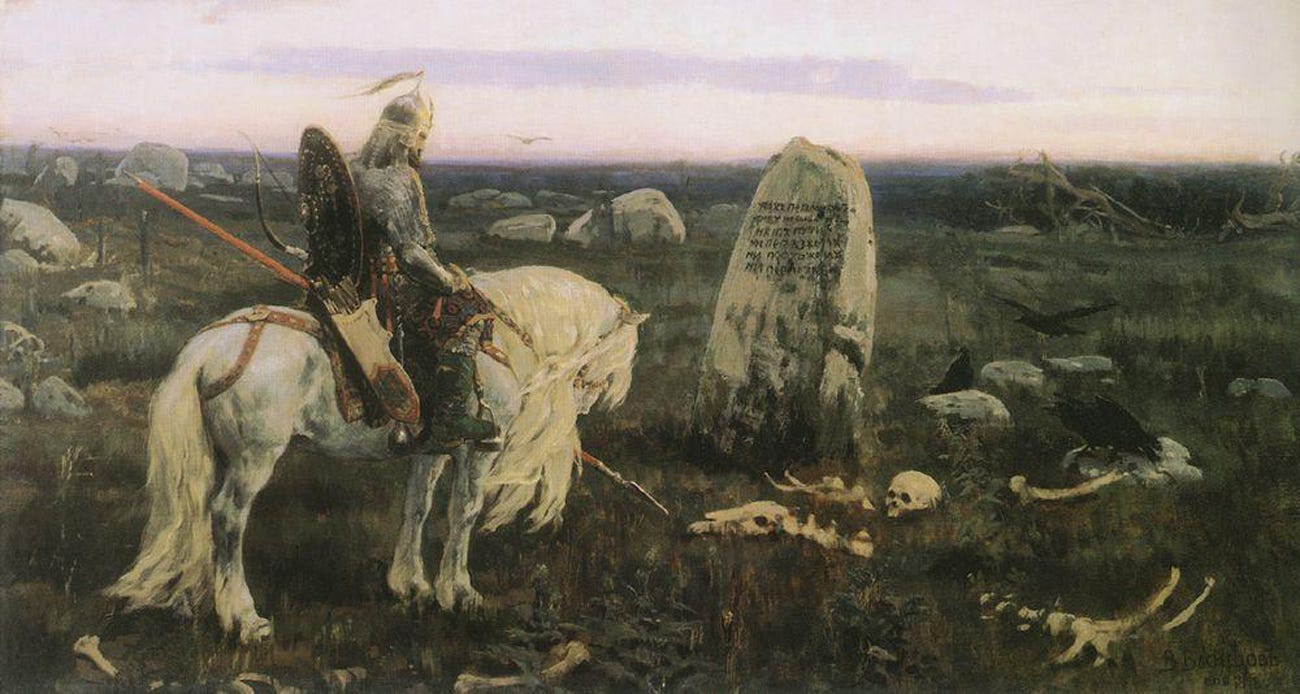



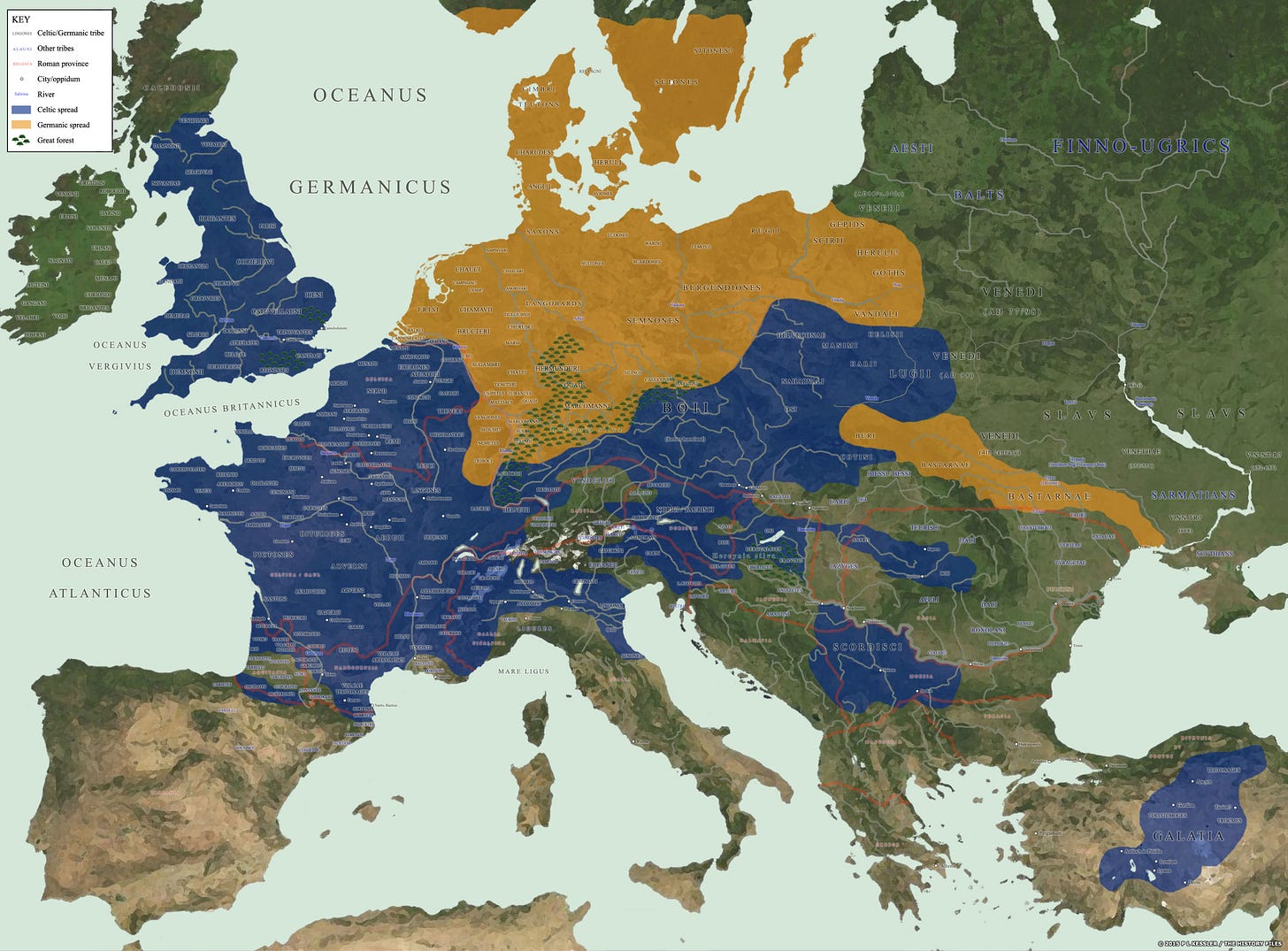



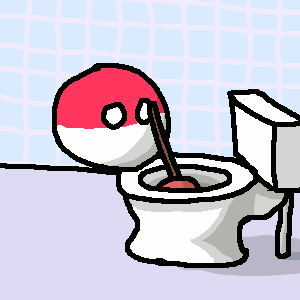





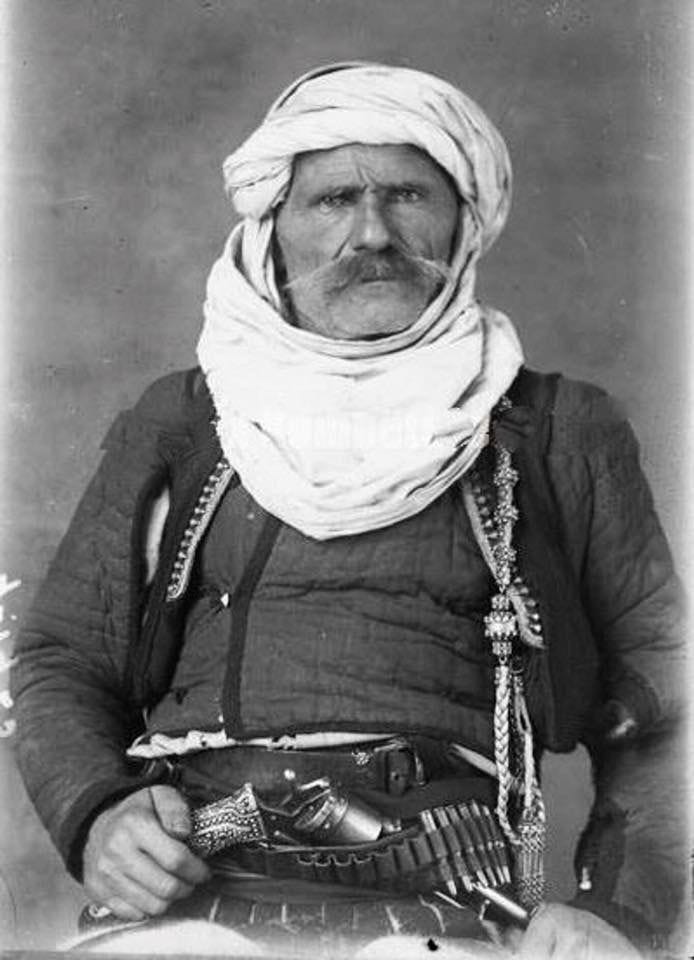
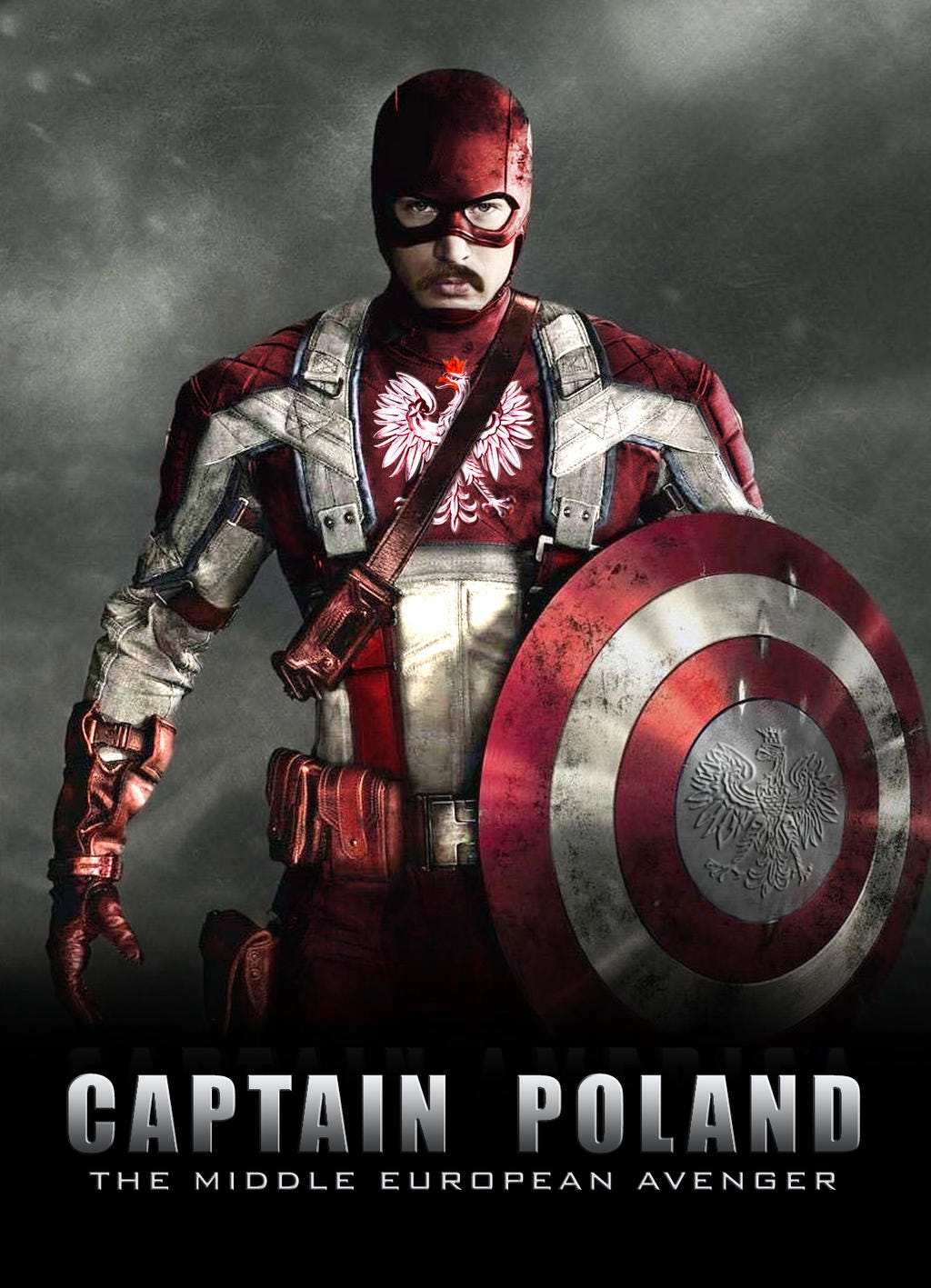
We Namibians are white
I may be wrong on this, but there is generally a lot of western misunderstanding of eastern European archaeology, where too many things are chalked down to "they must have not done this because there isn't enough of an archaeological record of it." But eastern Europeans, especially East Slavs and Russia in particular, made more constructions out of wood and less often out of stone. There's an awful lot of wood to go around, and a lot of space to cover, making prolific stone construction a costly endeavor. There's even a misconception that Russians outright forgot how to build things out of stone after the Mongol conquests. This isn't true, sometimes they did build buildings out of stone, but you're far likely to see less evidence for hill forts or churches in medieval Russia because they were built out of wood and not stone, and their evidence has all rotted away. Actual Christianization numbers would be worth looking into, but I have a hard time believing that Russia was barely Christianized until the 1500s. It simply plays too critical a role in the Russian state and society for them to have completely ignored the peasantry in such a rural and diffuse land as Russia.